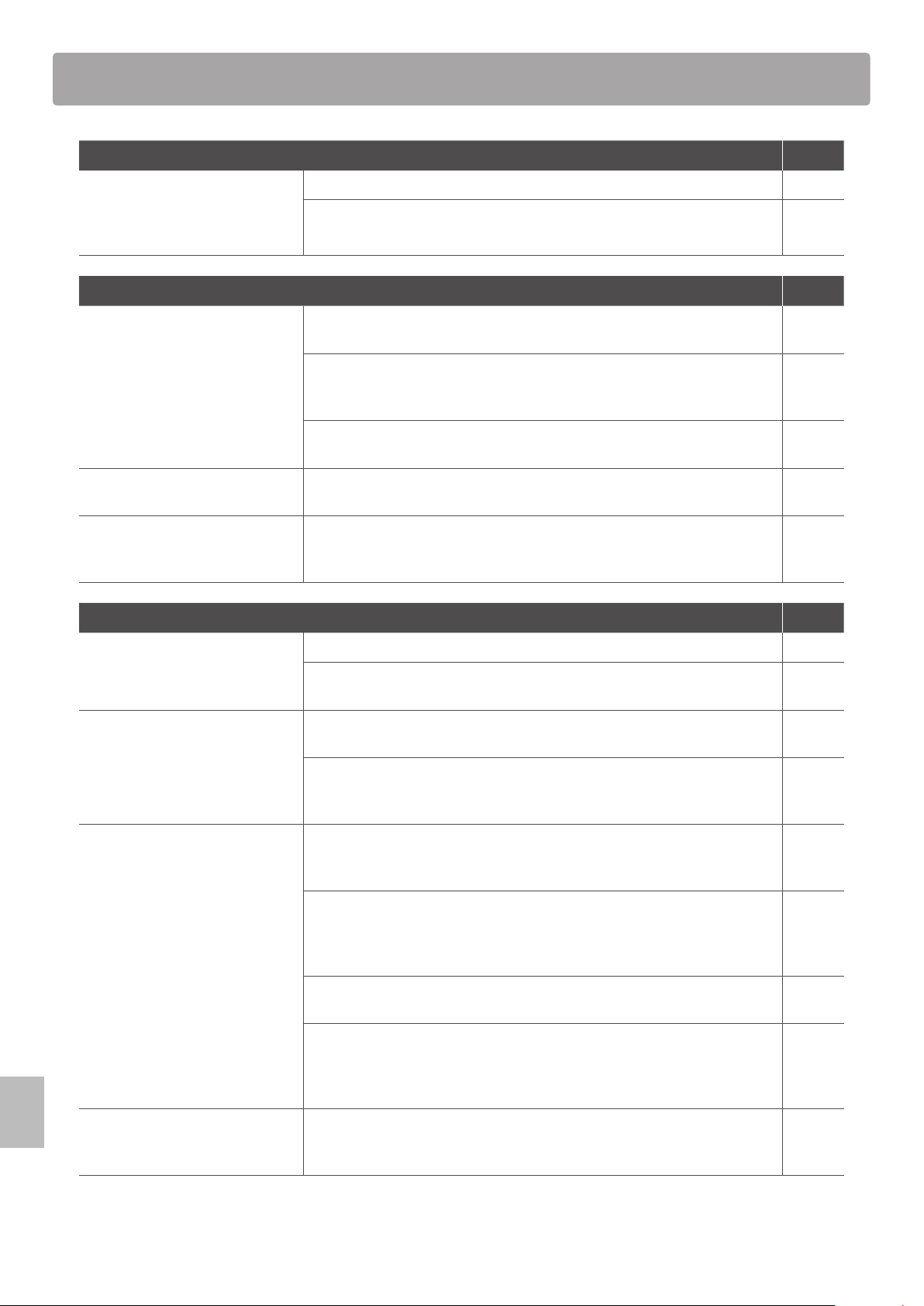Loading ...
Loading ...
Loading ...

116
Appendix
Troubleshooting
USB to HOST Page
The instrument is connected to
the computer using a USB cable,
however the software does not
respond to key presses.
Check that a USB MIDI driver is installed on the computer. 117
Check that ‘USB Audio Device’ or ‘KAWAI USB MIDI’ is selected in the software’s
input/output device settings.
117
USB to DEVICE Page
A USB memory device is not
detected, cannot be saved to, or
does not appear to function when
connected to the ‘USB to Device’
port.
Check that the USB memory device is formatted to use the FAT/FAT32
lesystem, and not set to ‘Write Protect’ mode.
16
Disconnect the USB memory device, turn the instrument o then on, then
reconnect the USB device. If the USB device still does not function, it may be
damaged or incompatible. Please try using a dierent USB device.
Ensure that the USB memory device is not a wireless ash drive. Such devices
are not compatible with the MP11SE.
The instrument pauses briey when
connecting a USB memory device.
This is recognised behaviour when using large capacity (e.g. 8GB+) USB
memory devices.
The current SOUND/SETUP setting
is not stored correctly when saved
to a USB memory device.
Ensure that the desired SOUND/SETUP setting has rst been stored to internal
memory before being saved to a USB memory device.
60,
61,
95,
MP3/WAV Audio, SMF Page
No sound can be heard when
playing an MP3/WAV audio le
stored on a USB memory device.
Check that the audio player volume is not set to 0. 79
Check that the format of the audio le is supported and listed in the ‘Audio
Player supported format specications’ table.
78
An MP3/WAV audio le stored
on a USB memory device sounds
strange, or does not play back
correctly.
Check that the format of the audio le is supported and listed in the ‘Audio
Player supported format specications’ table.
78
The le transfer speed of the USB memory device may be too slow to play the
audio le. Please try using a dierent USB memory device, ensuring that it
conforms to USB2.0 Hi-Speed standards.
An SMF (Standard MIDI le) sounds
strange when played back or some
parts don’t playback.
The MP11SE loads SMF les into the instrument’s Song Recorder (internal
memory), which only supports one track + drum track. MIDI data that requires
miltiple tracks may therefore not playback correctly.
94
When saving Song Recorder (internal memory) SMF les, the MP11SE includes
additional system exclusive data for selecting sounds.
The SMF le may therefore sound dierent when played back on devices other
than the MP11SE.
The program change messages cannot be loaded into the MP11SE’s Song
Recorder (internal memory).
If an SMF le that does not include the MP11SE’s additional setup information is
loaded in to the Song Recorder (internal memory) the current sound’s setting
will be used. This can be checked by using the ‘Listen’ button before loading
the SMF le.
94
When recording MP3/WAV audio
les, the volume is too low/too high
(distorted).
Adjust the ‘Audio Recorder Gain’ setting in the SYSTEM:Utility menu. 76
Loading ...
Loading ...
Loading ...